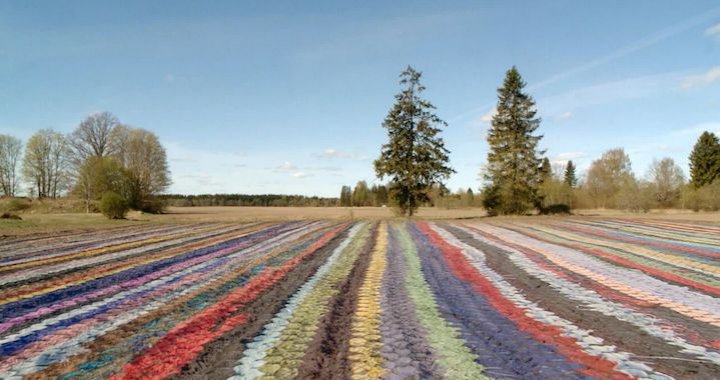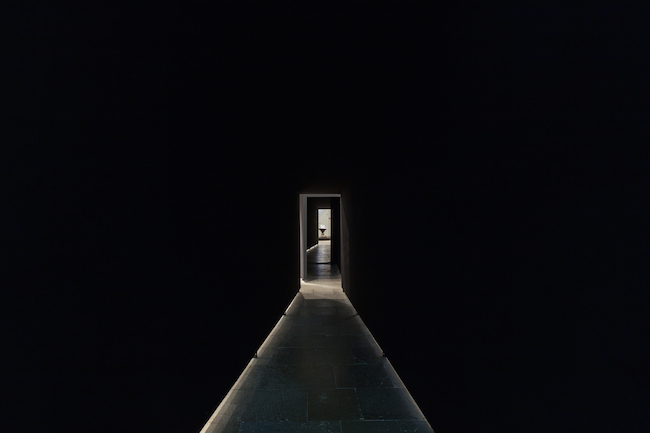
In between too wide and too narrow
Review: 7th Tallinn Applied Art Triennial
02/07/2017
The 7th Tallinn Applied Art Triennial will be open till July 23 at the Museum of Applied Art and Design in Tallinn. Even though the Applied Art Triennial has a longer history dating back to Soviet times, and had a break for several years after re-independence, the triennial has worked with contemporary subjects that are not only concerned with craft art, but that also deal with wider-ranging contemporary issues. This year, as is mentioned in the accompanying exhibition catalogue, instead of inviting an outside curator, the new organising team, together with the jury, decided on the subject and the artists for this year’s exhibition.

Photo: Paul Kuimet
First of all, the title of the exhibition is “Ajavahe. Time Difference”. The subject alone, which deals with such a wide range of possibilities of interpretation, can lead to different outcomes. “Time” as a subject concerning applied arts seems very suitable, taking into consideration art history and the role of craft art before fine art. It is interesting because the subject could be taken literally, thereby pointing out the physical qualities of time, as well as figuratively, depicting it more as an allegory. Judging from the press release, it seems that a more literal approach has been taken, inviting artists to deal with the subject of time in terms of the process of creation. Secondly, the subject also looks at how nowadays slowness seems to be falling behind, while on the other hand, speed is seen as an extreme superficiality. As a whole, it looks into the past-present-future aspects of time.
.jpg)
Photo: Paul Kuimet
On one hand, not taking an outside curator gives the exhibition more diverse works, but on the other, the exhibition text and the texts that are presented in the exhibition catalogue already indicate the direction that some of the main focuses will take. For example, articles in the exhibition catalogue focus more on popularizing applied art and the difference in duration when creating craft art in comparison to mass-production as well as its impact on applied art. Approaches like this are quite understandable and seem fitting as an exhibition concept, but at the same time, it seems both too generalized and too narrow of an idea. This is meant to create discussions concerning applied art and the issues that have developed in recent times (of course, one needs to take into consideration the specific region). Thus, focusing on time as a physical measurement in the creation of an artwork doesn’t justify anything, because no matter what kind of medium, any artwork takes time when compared to mass-production.
.jpg)
Photo: Paul Kuimet
I must admit that going to the exhibition, I had a certain degree of prejudice about the works that would be exhibited, which relates to the traditional division between fine art and applied art, and which also labels the latter as less valuable. Knowingly or unconsciously, people tend to separate them as if one couldn’t be the other, which can also lead to prejudice. Thus, this exhibition raises questions of why do we need the term “applied art”, and what is the difference that creates this division. Most of the works at the Applied Art Triennial seem more fine art than applied art. The applicability of these works has been hidden and it is more about the visual and conceptual qualities than their usage. The artworks that have been exhibited are very diverse from the conceptual and formal point of view. Therefore, the question is: Where is the border between applied art and fine art? Do we need such division between these terms? The exhibition itself presents a very diverse approach to the subject and the mediums that have been used. It seems that the organisers have mixed and matched more traditional representations with a strong craft tradition, and a very contemporary artistic approach with different levels of conceptual ideas.

Octave Vandeweghe’s work “Cultured Manners”
Most of the artworks that are presented at this exhibition are stepping over boundaries, mostly using applied art as a conceptual approach but not as a main goal. For example, Octave Vandeweghe’s series “Cultured Manners” (grand prix), Villu Plink and Silja Saarepuu’s video work “Carpet” (second place) and Jurgita Erminaité-Šimkuvienéle’s work “It’s Only a Question of Time” (third place) can be taken out of the context of applied arts and exhibited just as easily as fine art. Not only these three works, but many others as well, raised the question of how to define it. For example, Villu Plink and Silja Saarepuu’s video work “Carpet” depicts both artists creating a carpet on a field with a tractor. This process is slow and precise, but it is more the idea of a carpet than an actual carpet. It looks like one, but no one will be able to use it, therefore this work is more video art or land art that references applied art. Why is it so difficult or so necessary to define artistic approaches?

Jurgita Erminaité-Šimkuvienéle’s work “It’s Only a Question of Time”
The exhibition “Ajavahe. Time Difference” is exhibited on two floors. On the first floor, the main hall holds most of the artworks, whereas on the second floor, in the gallery space, two works have been exhibited. The exhibition rooms on the first floor have been very well designed with tunnels that separate the first room from the second. In that way, the organisers have created different spaces to exhibit artworks, and by slowly going through the tunnels, the viewers are given a short respite between areas. Much like when smelling lots of different perfumes, one needs to smell coffee beans in between so as not to get confused by too many smells. Thus, in this exhibition, the wonderful tunnels that not only separate the two rooms, but also the sounds from each other, give the viewer a possibility to take a break from so much diversity.
In some ways, the exhibition gives the impression of trying to assign more value to applied art and making it more popular, thereby breaking the stigma in the region when it comes to evaluating craft art. That said, even though design has been put next to craft art, it is more appreciated than the craft art because design is something more contemporary. The idea of craft somehow can’t surpass the prejudice of its connection to traditions and its functional roles. The exhibition “Ajavahe. Time Difference” is quite successfully breaking this stigma. The works at the exhibition fit very well with all of the ideas of what contemporary art is, in terms of both the methods that have been used in the works, and in the subjects that have been tackled.
.jpg)
Photo: Paul Kuimet
Even though I might not agree with the focus points and the interpretation of the subject, this exhibition has been executed very well, starting with the artists that have been represented and the design of the exhibition. Most importantly, it does raise questions regarding how we speak about applied arts and how we perceive craft. As it is pointed out in the exhibition catalogue by Keiu Krikmann and Triin Jerlei, concerning the international seminar “Modes of mediating applied art and design” that took place in April, applied arts and design struggle with a lack of feedback, which is due to a shortage of a specific language and critical analysis in the field. Sometimes talking about applied arts seems as if it is either being too narrowly analysed, concentrating more on the specialists in the field, or, too generally, by trying to justify their right to be perceived as contemporary art. In my opinion, the new organising team has made bold steps towards a better understanding and getting rid of any prejudices surrounding the subject.